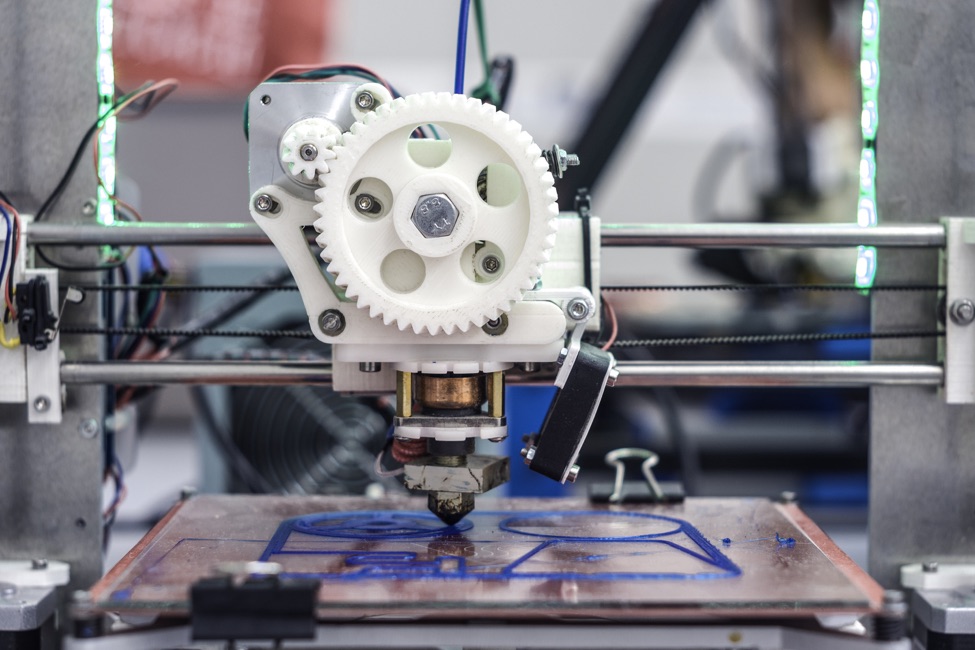How Additive Manufacturing is Changing Product Design
Pivot International | June 21, 2017
Additive manufacturing, or 3D printing, has already had a major effect on how products are developed and made in this country – and it hasn’t even become fully mainstream yet.
That’s changing rapidly. Industries that formerly weren’t able to implement additive manufacturing, like the aeronautics industry, for example, are now transitioning some of their parts manufacturing to 3D printing.
As the cost of 3D printing has come down, small and medium-sized businesses that previously couldn’t afford this new process are implementing it in larger numbers.
So how are all these developments affecting the product design process?
Designers can create more complex designs.
One of the most exciting things to emerge out of 3D printing is the ability to create more complex designs.
Believe it or not, there are designs that could not be created in any other way than by additive manufacturing. As Computer Weekly reports in an interview with designer Paul Doe, of the motorsport technology company ProDrive, certain shapes are impossible to create by molding, casting, or forging. Instead, they can only be 3D printed.
You can imagine the possibilities this opens up for product designers. This drastic loosening of the boundaries makes dramatic innovation much more of a possibility.
Parts can be created quickly and at a low cost, allowing for more experimentation.
Before 3D printing, if you needed a special, non-standard tool or part, you had to wait for weeks or even months for it to be created and then shipped back to you.
Now, companies that incorporate 3D printing or that use the services of an additive manufacturer can get that non-standard item within hours.
It’s almost impossible to overstate just how huge of a change that is from the previous days of manufacturing.
For product designers, this change means that they are far more free to experiment with new, unconventional shapes or materials. The cost of creating these parts can be brought so low, and the timeline so shortened, that it’s feasible to try multiple ideas before settling on the one that works.
This allows for far more experimentation and calculated risk-taking – both of which are friends to businesses that want to succeed.
The lower cost of additive manufacturing can reduce the barrier to market entry for many smaller-scale products.
There are plenty of product designers at small and medium-sized companies – not to mention all the independent product designers out there – who are coming up with excellent product ideas, but don’t have the capital to bring them to market on a large scale.
Some of these product designers choose to work with product development firms like my company, Pivot International, which can help increase efficiency and bring down costs. Some, though, are seeking out additive manufacturing.
Using 3D printing allows designers to manufacture products that 5 or 10 years ago would never have gone farther than a prototype. Unlike with traditional manufacturing, you can print 10 units of a product and stop, if that’s all you anticipate needing. There’s no need to place orders for hundreds or thousands of units just to keep your per-unit cost reasonable.
This, along with the rise in e-commerce sites, has made it much easier for independent and smaller product designers to get their products to consumers, creating more competition and allowing for more innovation in the marketplace.
A wider range of available materials is making additive manufacturing a reality for more industries.
It wasn’t too long ago that the only types of materials available for 3D printing were plastics. While plastics were great for rapid prototyping, they weren’t so effective for industries like the automotive and aerospace industries.
Today, that’s definitely changed. Additive manufacturers can print in a wide variety of materials, like paper, ceramics, and metal, among others. One company, Desktop Metal, has created a 3D printer that can print metal parts at a level of speed and quality previously unavailable. Once this printer becomes widely available, it could spark big changes in industries that rely heavily on metal – defense, utilities, energy, and more.
Additive manufacturing is making strides on an almost yearly basis. To read more about how the industry is changing, take a look at “20 Business and Manufacturing Trends to Watch for in 2017.”



